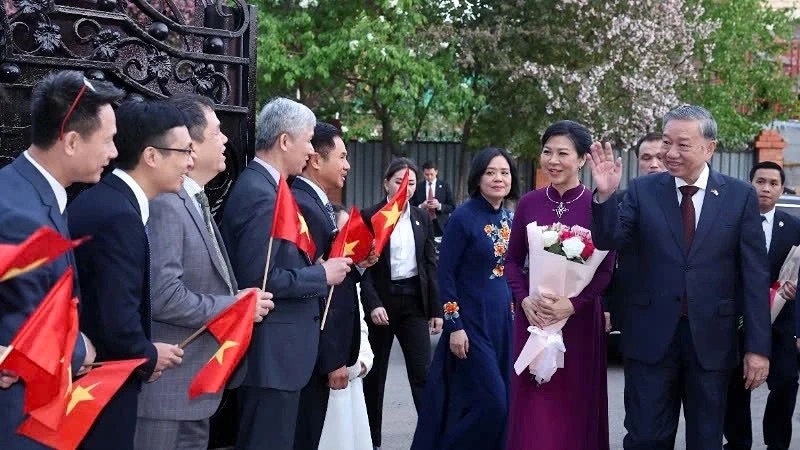Rare Photos of Khai Dinh Imperial Tomb Construction
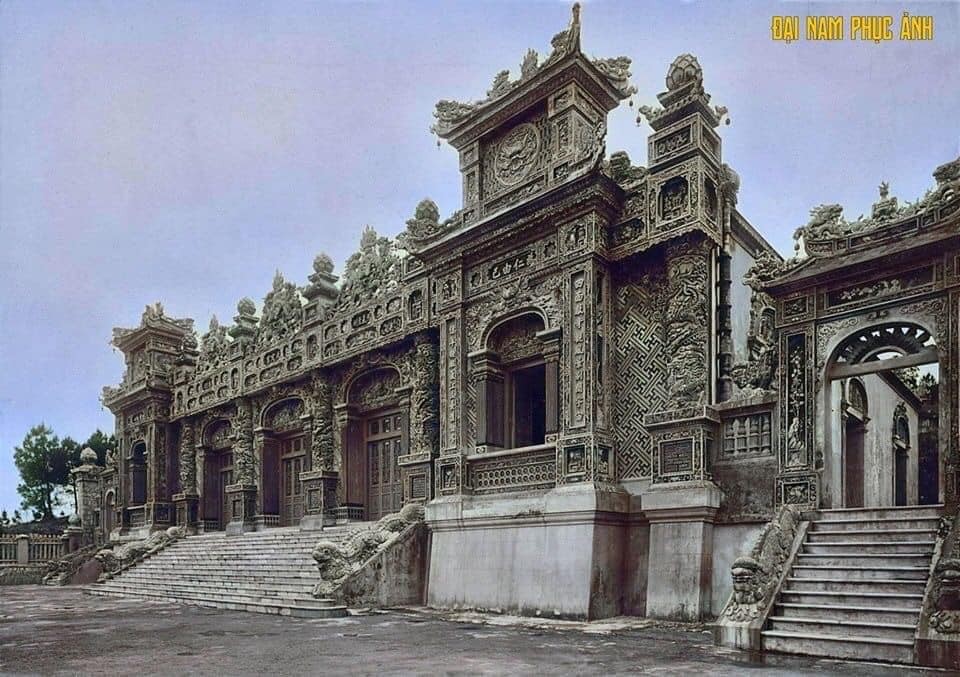 |
| Emperor Khai Dinh chose to build his tomb out of modern materials like concrete and wrought iron. The tomb is also wired for electricity, a first in Hue tomb design. Documentary photos colored by Dai Nam Phuc Anh |
Built in 1920 and finished in 1931, Khai Dinh tomb is one of the most unique architectural features of the royal art in Hue city. It is the resting place of the 12th Emperor of Nguyen Dynasty – Khai Dinh (1885 – 1925).
It is situated on the side of Chau Chu mountain outside Hue city, now belonging to Thuy Bang commune, Huong Thuy town.
Also known as Ung Lang (Ung Mausoleum), this hillside monument is a synthesis of Vietnamese and European elements. Most of the tomb’s grandiose exterior is covered in blackened concrete, creating an unexpectedly Gothic air, while the interiors resemble an explosion of colourful mosaic.
Khai Dinh was the penultimate emperor of Vietnam, from 1916 to 1925.
Before building his tomb, King Khai Dinh consulted with many geomancers and then he finally chose Chau Chu mountain as the location for his mausoleum.
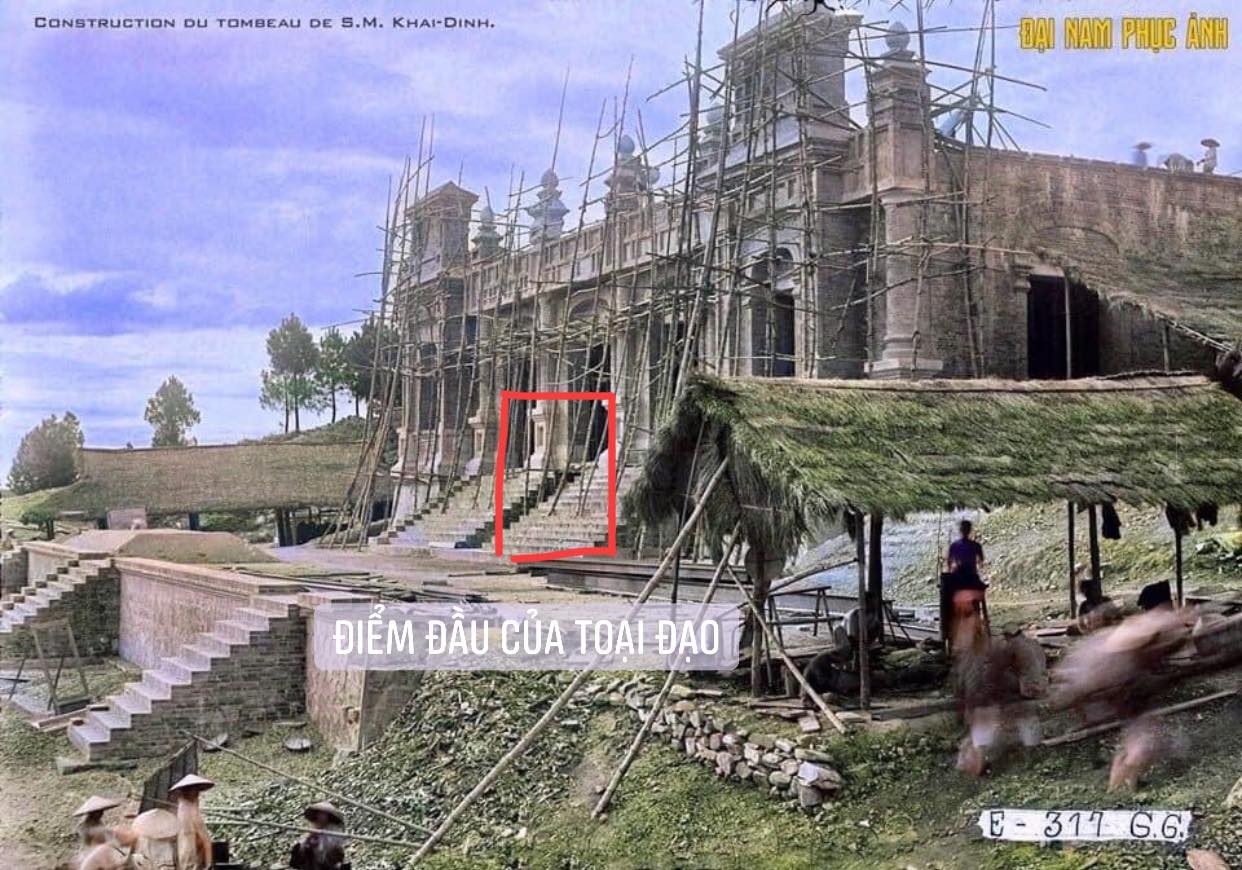 |
| Work started on the tomb in 1920 and the construction lasted 11 years. |
In comparison with those of the preceding emperors, Khai Dinh’s tomb is much smaller in surface (117m x 48.5m) but it is very elaborate. It is the result of the interminglement of many architectural trends: European and Asian, as well as ancient and modern.
The construction of his flamboyant tomb took 11 years, from 1920 year to year 1931, and is the last Hue Imperial tomb. The tomb of Khai Dinh is 10km from Hue in Chau Chu village.
Compared to the tombs of the previous kings, the size of the Tomb of Khai Dinh is more modest, only about 5,000 square meters. However, this project is extremely elaborate.
At first, the main building brings about a strong Western feel, however, the landscape was arranged to reflect traditional perceptions: a balanced combination between wood, land, water and plants.
Overall, it’s an emerging rectangular structure with 127 steps, leaning against the mountain. Entering the tomb area, one should climb a 37 steps gate with the biggest dragons in the country forming the side walls.
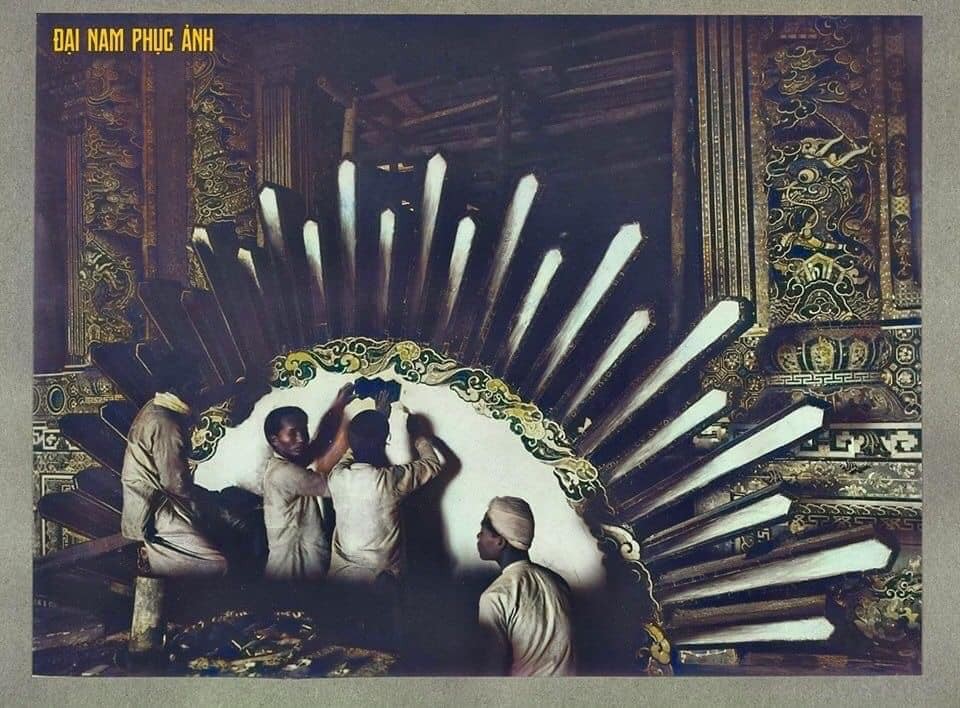 |
| Khai Dinh’s tomb is one of the most unique architectural features of the royal art in Hue city. |
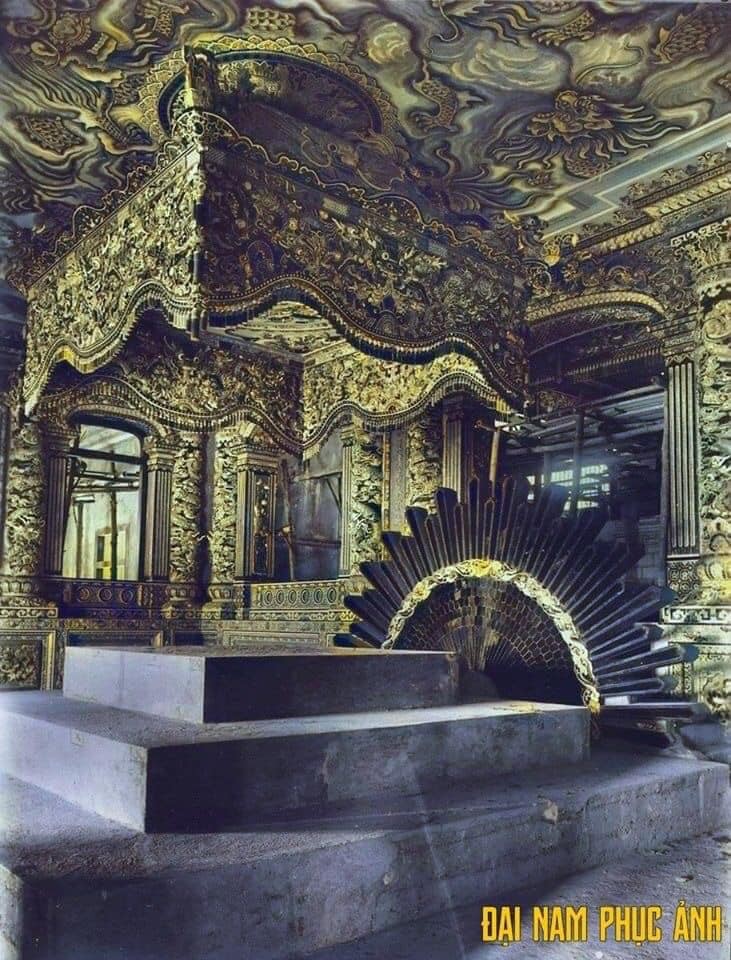 |
| Compared to the gray grimness of the rest of the tomb, Thien Dinh palace looks gaudy and bright. The exterior is decorated in a flowery show of glass and porcelain that can best be described as “baroque”; the interior is no less gaudy. |
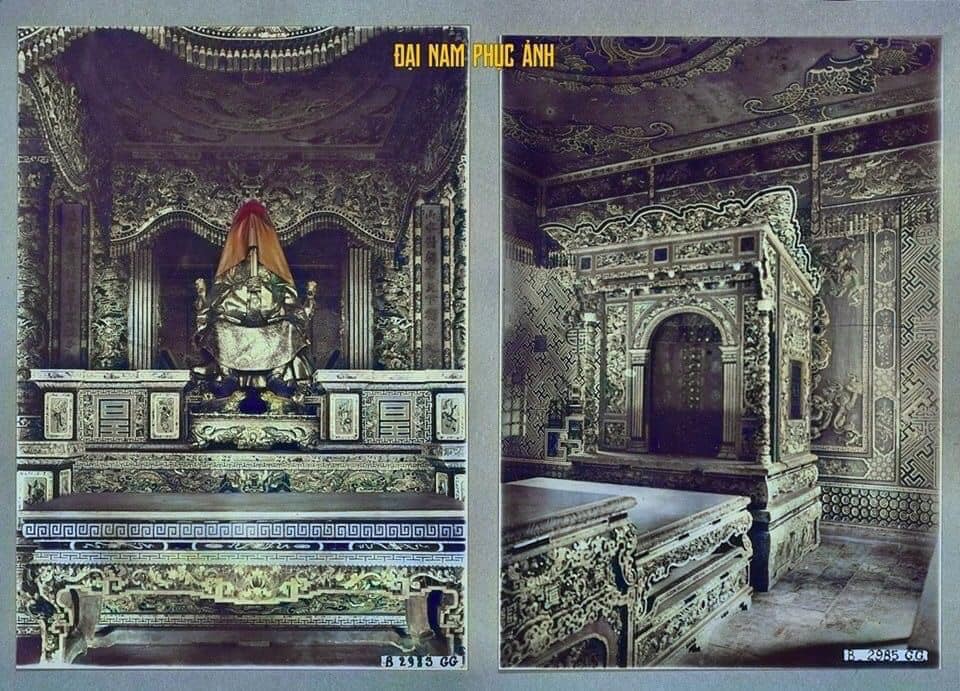 |
| The walls are densely decorated. |
In that same place of the Tomb in the courtyard of ceremonies, we have the stele Pavilion, with a Stela engraved in stone on the life and reign of the emperor. This monument is unique, as is the single flag of the stele of all Hue imperial tombs whose shape is hexagonal. The courtyard is flanked on both sides by two high and imposing pillars.
Climbing 29 further steps, one is reaching the Honour Courtyard where mandarin honour guards have a mixture of Vietnamese and European features. These statues are made of stone, a material very rare in Khai Dinh's tomb.
Up three more flights of stairs is the stupendous main building, Thien Dinh. The walls and ceiling are decorated with murals of the Four Seasons, Eight Precious Objects and Eight Fairies.
The walls are densely decorated and inlaid with elaborate glass and porcelain designs. The floor is covered with enameled flowers bricks and the ceiling is painted with nine dragons, appearing in fine fleeting clouds.
Under a graceless, gold-speckled concrete canopy is a precious copper statue of Khai Dinh reflecting the exact size of his which was molded in France in 1920 by two French ducing P. and F. Barbedienne upon the request of Khai Dinh King. His remains are interred 18m below the statue.
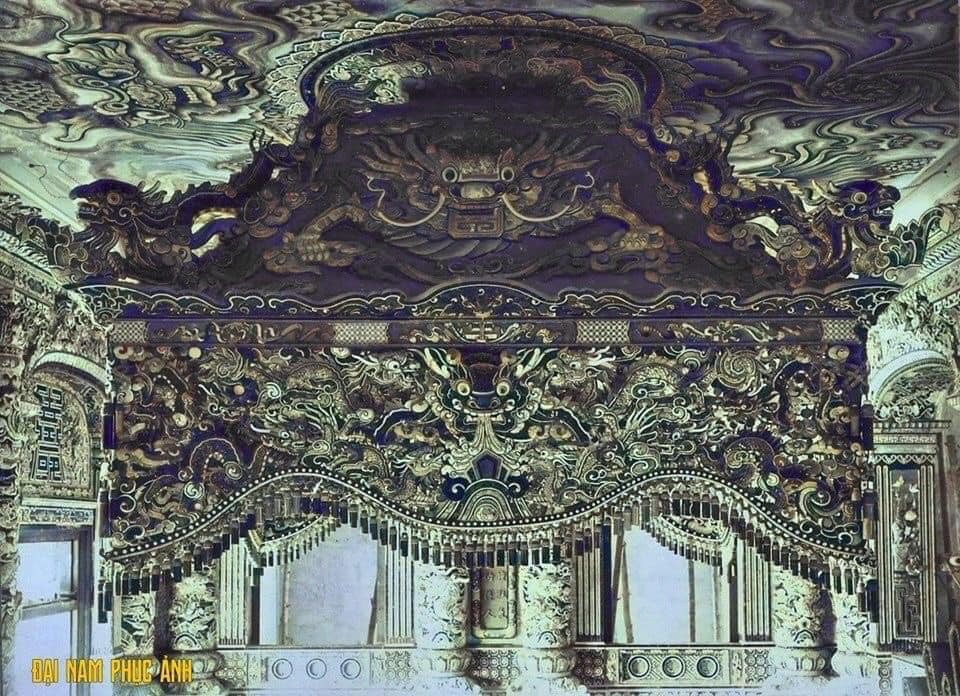 |
| According to experts, Khai Dinh tomb is the highlight of royal architecture at this time. |
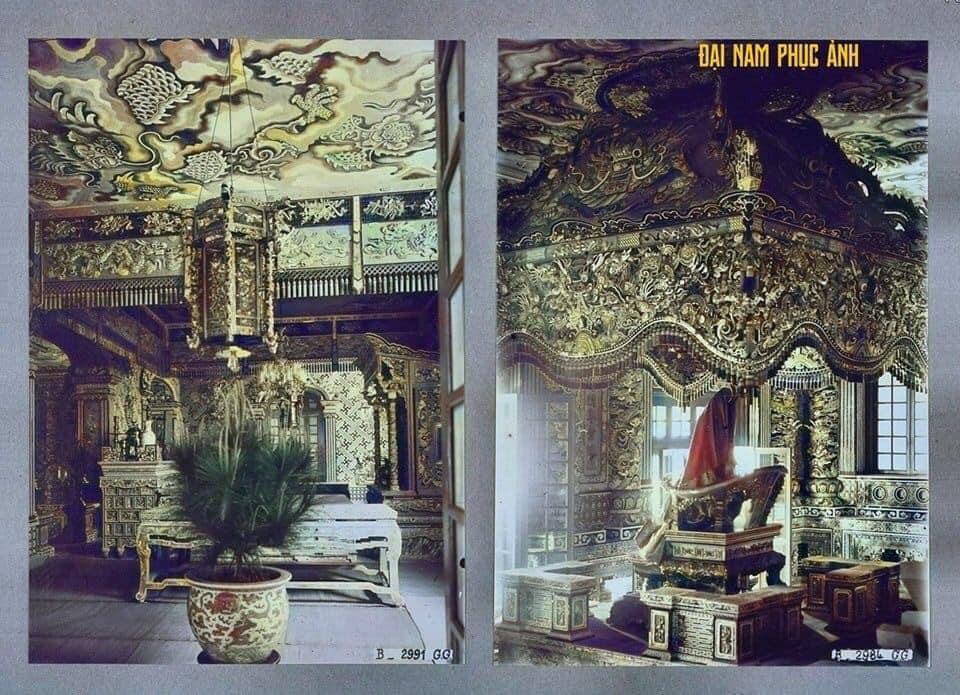 |
| The ceiling is painted with nine dragons, appearing in fine fleeting clouds. |
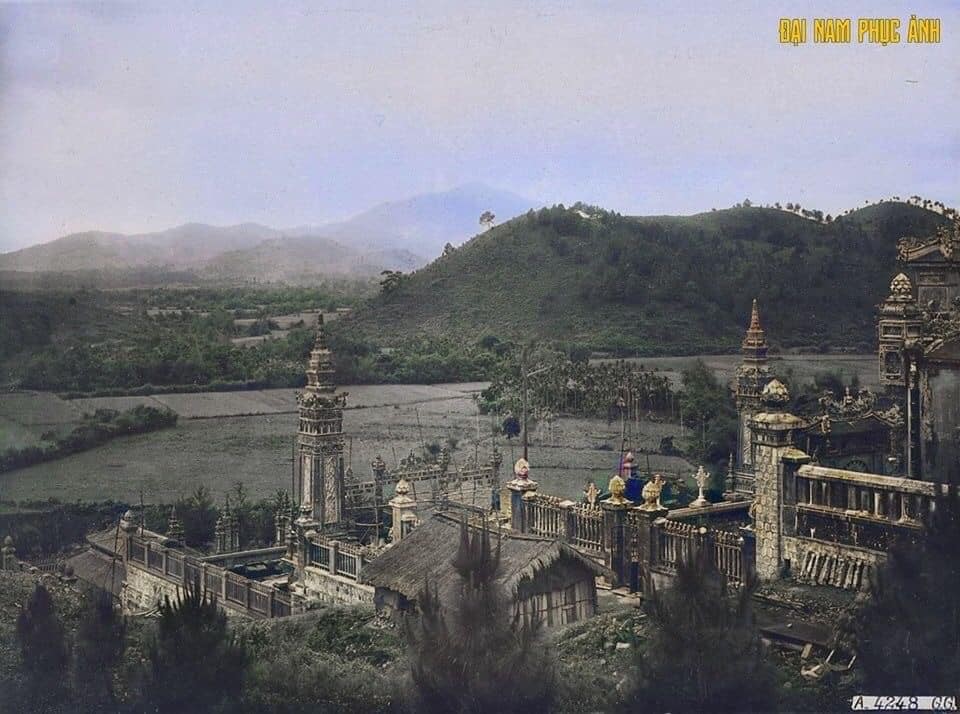 |
| Before building his tomb, King Khai Dinh consulted with many geomancers and then he finally chose Chau Chu mountain as the location for his mausoleum. |
The primary responsibility for the creation of artistic masterpieces of Khai Dinh tomb is Phan Van Tanh artisan who is known as an author of three very famous murals "Nine dragons hidden in the clound" decorated on the ceiling of the palace Thien Dinh.
Thanks to the ingenuity and meticulousness of the Vietnamese talented artisans, Khai Dinh tomb becomes the skilled symbol as well as the pinnacle of porcelain and glass. It is worth being a structure bringing history - architecture – art value and having completely different style tombs of kings before.
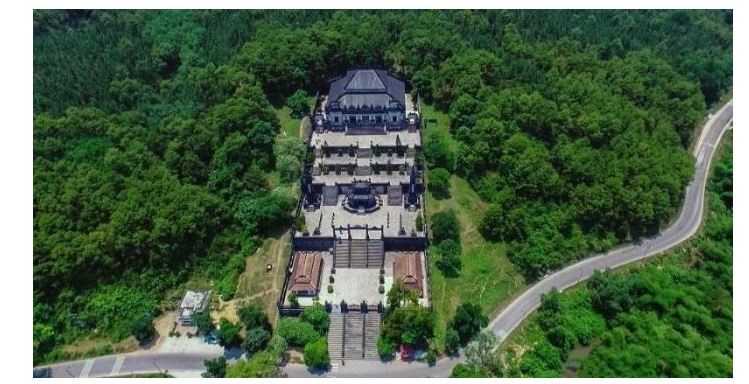 |
| The Tomb of Khai Dinh, also known as Ung Lang (Ung Mausoleum), was built for King Khai Dinh, the twelfth emperor of the Nguyen Dynasty. |
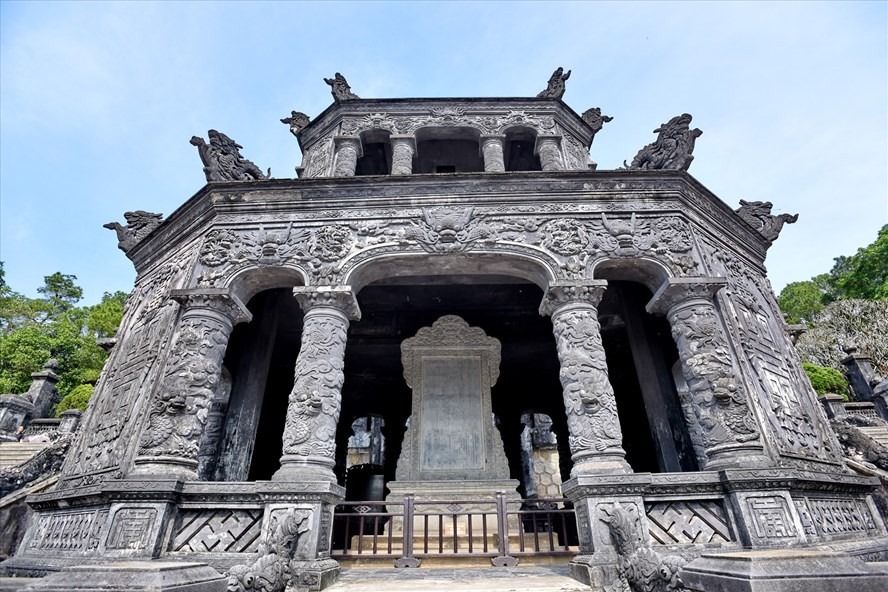 |
| The architecture of the Khai Dinh’s tomb was considered remarkable by many generations, standing out from the traditional Nguyen Dynasty style by its innovation, originality and intricacy in every small detail. Photo: Thai Hoang |
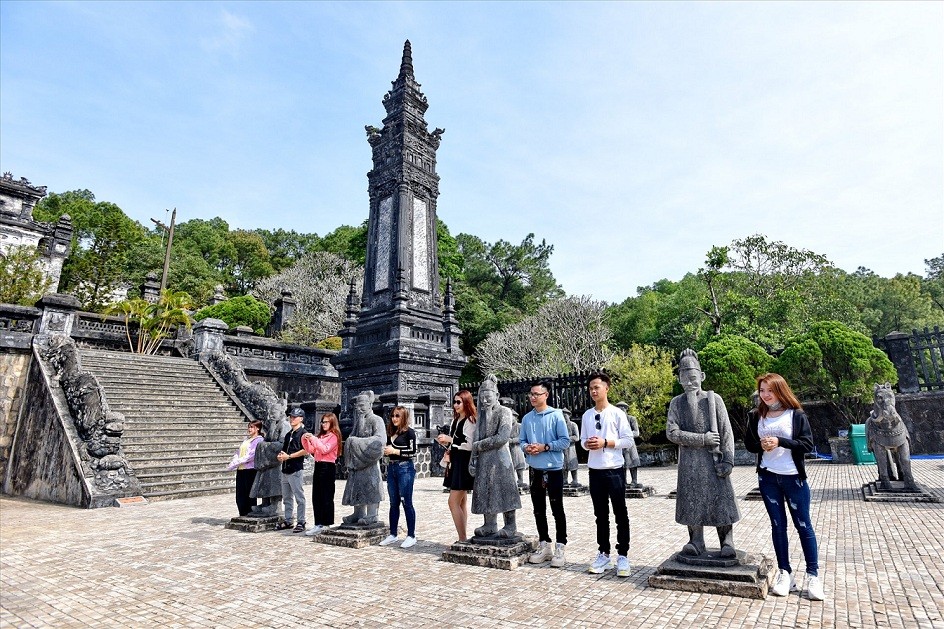 |
| Khai Dinh’s tomb has an honor guard of stone bodyguards, mandarins, elephants, and horses. This honor guard, unlike the rest of the royal tomb, is carved out of stone, and occupy two rows on each side of the forecourt. Photo: Thai Hoang |
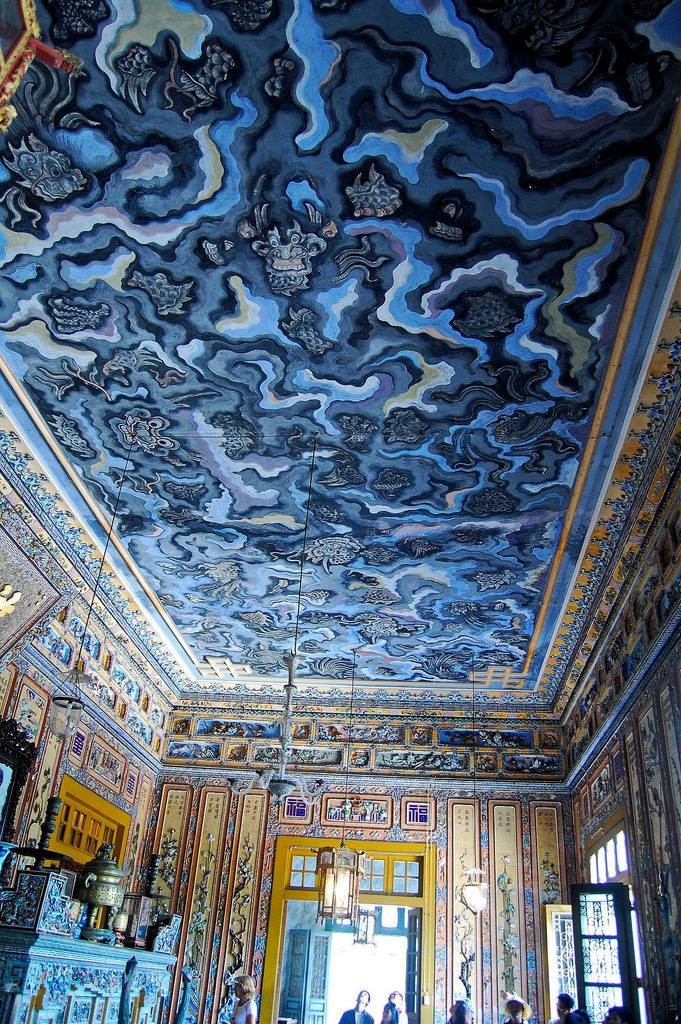 |
| The ceiling is painted with nine dragons, appearing in fine fleeting clouds. Source: Hanoi Creative City |
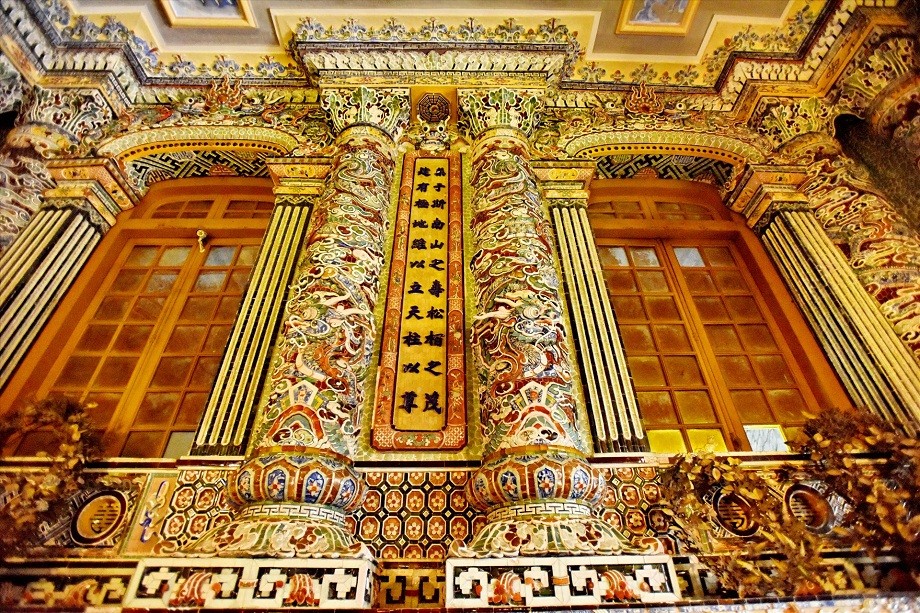 |
| The walls are densely decorated and inlaid with elaborate glass and porcelain designs. Photo: Thai Hoang |
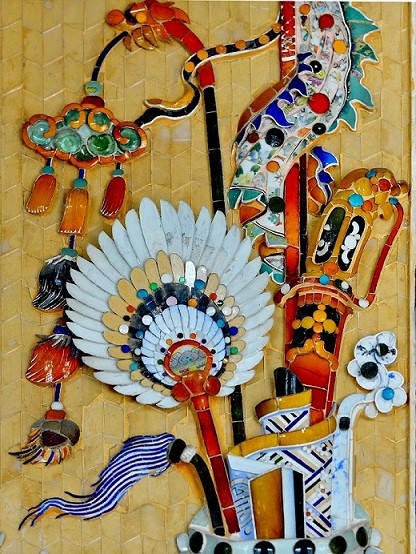 |
| Photo: Thai Hoang |
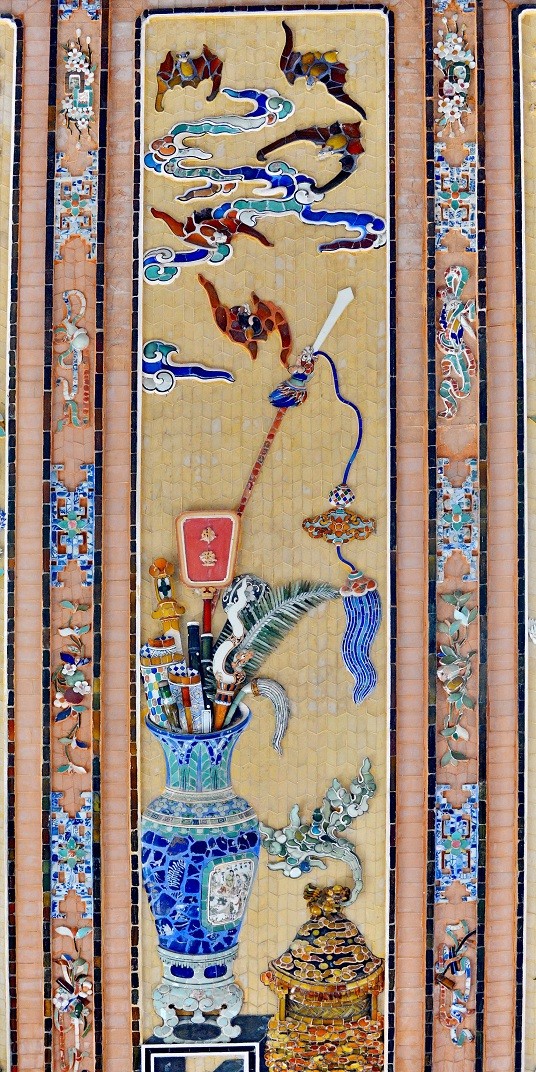 |
| The exterior is decorated in a flowery show of glass and porcelain that can best be described as “baroque”; the interior is no less gaudy. Photo: Thai Hoang |
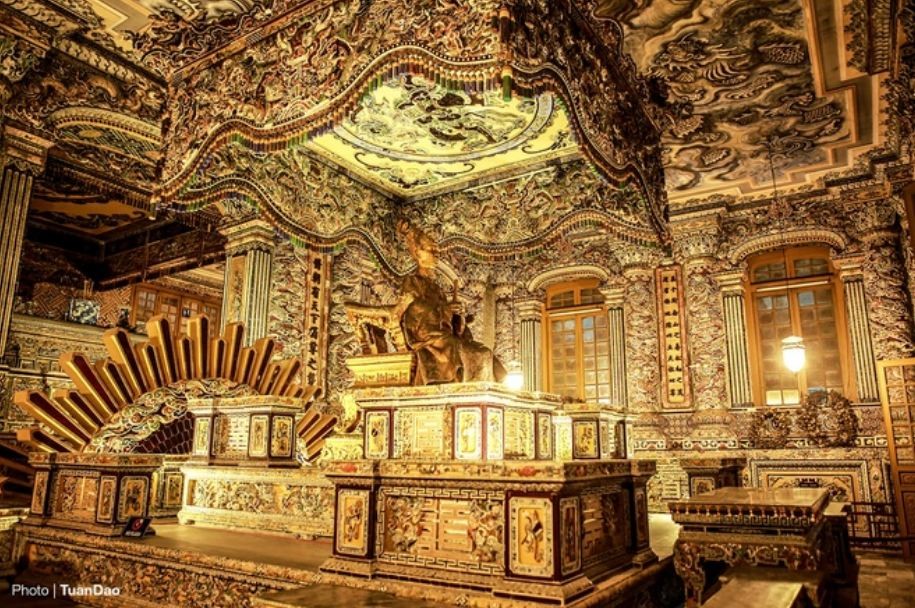 |
| Inside the Thien Dinh Palace. The architecture of the Khai Dinh’s tomb was considered remarkable by many generations, standing out from the traditional Nguyen Dynasty style by its innovation, originality and intricacy in every small detail. Photo: Tuan Dao |
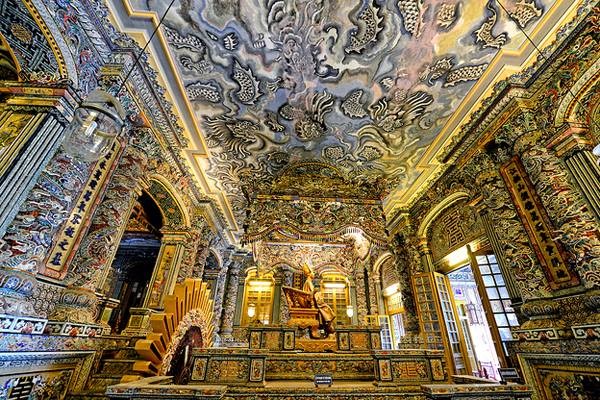 |
| Source: Hanoi Creative City |
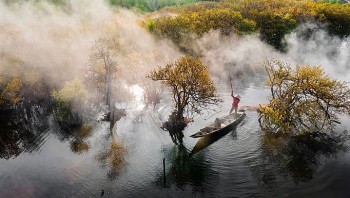 | Beautiful Seasonal Changes in Hue's Mangrove Forest In late September, the Ru Cha mangrove forest takes its costume change as the tree leaves turn yellow, enchanting people. |
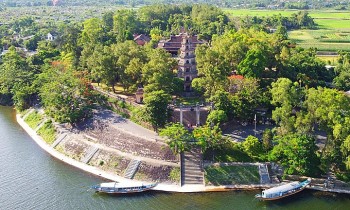 | Vietnam News Today (October 1): Launches New Normal Tourism Recovery Program Vietnam News Today (October 1): Vietnam records 7,937 new local Covid cases; Vietnam launches new normal tourism recovery program; HCM City cautiously eases restrictions as ... |
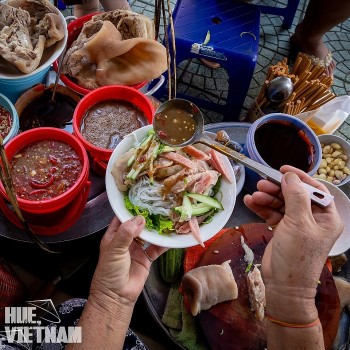 | Must-try Dishes in the Ancient Capital of Vietnam Through Photos of Local Photographer 12 yummy must-try dishes in Hue city. |
Recommended
 Travel
Travel
Vietnam Through Australian Eyes: Land of Flavor, Warmth, and Timeless Charm
 Travel
Travel
Strategies for Sustainable Growth of Vietnam’s Tourism from International Markets
 Travel
Travel
Vietnam Strengthens Its Presence On The Global Tourism Map
 Multimedia
Multimedia
Phong Nha-Ke Bang National Park Named Top Adventure Travel Site
 Travel
Travel
Vietnam Welcomes Record-High Number of International Visitors
 Travel
Travel
Luxury Train From Hanoi To Hai Phong To Be Launched In May
 Travel
Travel
Phong Nha Named Top Budget-Friendly Travel Destination for Spring 2025: Agoda
 Travel
Travel


